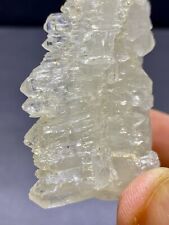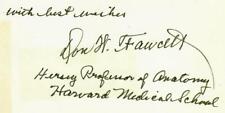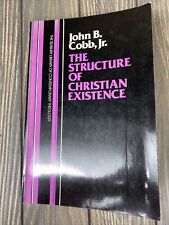"Structure of Spermatozoa" Don W. Fawcett Signed Album Page COA For Sale

When you click on links to various merchants on this site and make a purchase, this can result in this site earning a commission. Affiliate programs and affiliations include, but are not limited to, the eBay Partner Network.
"Structure of Spermatozoa" Don W. Fawcett Signed Album Page COA:
$499.99
Up for sale a RARE!"Structure of Spermatozoa" Don W. Fawcett Hand Signed Album Page.This item is authenticatedBy Todd Mueller Autographs and comes with their certificate of authenticity.ES-6199EDon Wayne Fawcett (March 14, 1917 - May 7, 2009) was a pioneer of electron microscopy and one of its greatest practitioners for studying the organization of cells and tissues. His greatest achievement was his description of the structure of spermatozoa and the male reproductive system. Don Fawcett was born in 1917 on a farm in Iowa, where his father and grandfather had raised purebred sheep and cattle until his father's poor health forced the family to leave the farm and move to Boston, where Fawcett's father managed a successful wool business. Fawcett attended high school at the Boston Latin School. Upon graduation, he matriculated at Harvard College in 1934, followed by Harvard Medical School in 1938, where he connected with anatomy professor George B. Wislocki. "I stole as much time as I could from my course work to do independent research on projects that included studies on the vascular bundles of aquatic mammals, and the amedullary bones of the Florida manatee", he recalled. While in college, Fawcett illustrated a book on athletic bandaging that had been written by the football team's physician. This may have been his only contribution as an illustrator; his later and more widely popular books were illustrated by Sylvia Collard Keen. In the summers, Fawcett worked on Bailey Island off the coast of Maine, where he embalmed and prepared small sharks for sale to colleges for comparative anatomy courses. This early interest in anatomy served him well when he trained in surgery at Harvard. Fawcett's predominant memory of his clinical training was being on duty in the emergency ward the night of the infamous Cocoanut Grove Nightclub disaster of 1942, which claimed 492 lives in one of the deadliest fires in American history. "We had been having a quiet evening when, without advance notice, we received 115 seriously burned patients within an hour and a half. Mobilizing all of the off-duty staff that I could reach, I continued on duty for 30 hours doing all I could to relieve the pain and dress the burns of the victims." He received his M.D. in 1942. Fawcett served as a battalion surgeon and captain in the European Theater of World War II, but, before shipping out, he married Dorothy Secrest Fawcett, his wife for 68 years, who survived him. After the war, Fawcett chose for a career in research instead of surgery. He returned to Harvard, where he served as an instructor. Fawcett perfected the art and technology of microscopy in the early days of cell biology, which emerged as a modern field after the electron microscope became more widely available in the 1940s. He would routinely cut thin sections at home, before venturing in the early morning hours to his lab at Harvard, where he viewed them with the microscope that would do so much to reveal the secrets of form and function. He kept a microtome at home, and it was rumored that he also had a private collection of diamond knives to help achieve his unparalleled results. Tom Pollard, a student at Harvard during Fawcett's chairmanship, recalls how Fawcett used his skills in the darkroom to produce spectacular prints of electron micrographs to illustrate the key features of each image. He may have been most renowned as the first person to describe and depict in detail human spermatozoa, and he published extensively on the anatomy of male reproductive cellular anatomy. He sought out Keith Porter, another pioneering electron microscopist, at the Rockefeller Institute. There, with Porter and George E. Palade, Fawcett recalled in 2000 that he, working with his illustrious colleagues, "undertook a project on the fine structure of ciliated epithelium that revealed the 9+2 pattern of microtubules in the cilia for the first time in a metazoan." Fawcett described the early days of electron microscopy as: "For morphologists the decade from 1950 to 1960 held the same anticipation and excitement that attends the opening of a new continent for exploration. The electron microscope revealed marvelous order and functional design in the organization of every tissue and organ that was examined and added significantly to our understanding of our own structure (...)". Fawcett published a collection of his fine-structure micrographs in The Cell, a classic cell biology text that features all the major cell structures, In 1955 Fawcett assumed the position of chair of the Department of Anatomy at Cornell Medical School in New York City and established an electron microscope laboratory. He had become what today might be characterized as the quintessential descriptive scientist; later generations of cell biologists and biochemists would build on his seminal work. After four years at Cornell, Fawcett again returned to Harvard as Hersey Professor of Anatomy and Chairman of the Department. The endowment for his chairmanship had been established by Ezekiel Hersey in 1770 with a gift of 1,000 pounds, and, Fawcett recalled, "My salary reflected the size of that endowment." Fawcett, together with Keith Porter, Montrose Moses, Morgan Harris, Hans Ris, Hewson Swift, and J. Herbert Taylor, founded the American Society for Cell Biology in 1960, and was elected as its first president in 1961. They charged themselves with organizing the inaugural scientific meeting of the embryonic society in Chicago where Fawcett was elected its first president. In 1972, Fawcett was elected as a member of the National Academy of Sciences. In 1976 Fawcett resigned the chairmanship and became Senior Associate Dean for Preclinical Science, a position for which, by his own description, he was ill-suited. After spending some time annually in Africa as examiner in the School of Veterinary Medicine of the University of Nairobi, Kenya, where he indulged his profound love of and talent for animal and nature photography, Fawcett left Boston in 1985 to take the position of senior research scientist and director of electron microscopy at the International Laboratory for Research on Animal Diseases in Nairobi. There, he worked in parasitology in a well-equipped laboratory financed by the World Bank and other international agencies. Its mission was to find methods of controlling two parasitic diseases, theileriosis (also known as East Coast Fever) and trypanosomiasis, which together killed hundreds of thousands of cattle annually in East and Central Africa. Fawcett relished the freedom from administrative duties that he enjoyed there. With just a small German microscope and all the accessories he needed, Fawcett could devote all his energy to studying what he considered an interesting new field. He found that he was able to "add significantly to what was then known about the parasites and their arachnid and dipteran vectors." In 1981, Fawcett became a founding member of the World Cultural Council.

Related Items:
Very Amazing Structure of Etched Faden Quartz, WEIGHT;54gram, SIZE;33*21*65mm.
$40.99
"Structure of Spermatozoa" Don W. Fawcett Signed Album Page COA
$349.99
Vintage 1979 The Structure Of Christian Existence By John B Cobb Jr Paperback
$11.99



